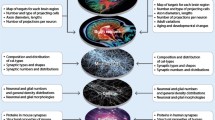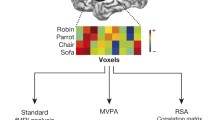Abstract
Despite cash-strapped times for research, several ambitious collaborative neuroscience projects have attracted large amounts of funding and media attention. In Europe, the Human Brain Project aims to develop a large-scale computer simulation of the brain, whereas in the United States, the Brain Activity Map is working towards establishing a functional connectome of the entire brain, and the Allen Institute for Brain Science has embarked upon a 10-year project to understand the mouse visual cortex (the MindScope project). US President Barack Obama's announcement of the BRAIN Initiative (Brain Research through Advancing Innovative Neurotechnologies Initiative) in April 2013 highlights the political commitment to neuroscience and is expected to further foster interdisciplinary collaborations, accelerate the development of new technologies and thus fuel much needed medical advances. In this Viewpoint article, five prominent neuroscientists explain the aims of the projects and how they are addressing some of the questions (and criticisms) that have arisen.
Similar content being viewed by others
References
Alivisatos, A. P. et al. The brain activity map project and the challenge of functional connectomics. Neuron 74, 970–974 (2012).
Reimann, M. W. et al. A biophysically detailed model of neocortical local field potentials predicts the critical role of active membrane currents. Neuron 79, 375–390 (2013).
Alivisatos, A. P. et al. The Brain Activity Map. Science 339, 1284–1285 (2013).
Author information
Authors and Affiliations
Corresponding authors
Ethics declarations
Competing interests
P.M.M. is a part-time employee of GlaxoSmithKline (GSK) and also holds stocks and stock options. He has also been paid speaker's honoraria by Biogen and Novartis and a review panel honorarium by Donders Institute. The other authors declare no competing financial interests.
Related links
Glossary
- Allen Institute for Brain Science
-
The Allen Institute for Brain Science is an independent non-profit medical research organization. Launched in 2003 with a seed contribution from founder and philanthropist Paul G. Allen, it uses a big science approach to generate comprehensive mouse, monkey and developing and adult human brain atlas resources. In 2012, Allen committed an additional US$300 million for the first 4 years of a 10-year plan to further propel and expand the institute's scientific programmes, bringing his total commitment to date to $500 million. The Allen Institute's data and tools are publicly available online.
- Brain Activity Map
-
The Brain Activity Map project was proposed by an independent group of American researchers sponsored by the Kavli Foundation. The project's goals — to develop novel tools to measure, manipulate and model the activity of neurons in living brains — came about from a meeting in 2011 held by private philanthropic organizations (the Kavli Foundation, the Allen Institute for Brain Science and the Gatsby Charitable Foundation). The project aims to generate a dynamic map of the brain — that is, a 'functional connectome' — and to achieve systematic measurements of neural activity in complete neural circuits. This will require the development of novel imaging or nanoelectronic technologies that can capture the activity of every individual neuron, and will be complemented by techniques to systematically manipulate and computationally analyse the activity of these circuits. The Brain Activity Map was endorsed by the US government and subsumed by the BRAIN Initiative (Brain Research through Advancing Innovative Neurotechnologies Initiative), after the official announcement of the BRAIN Initiative by the US government.
- BRAIN Initiative
-
(Brain Research through Advancing Innovative Neurotechnologies Initiative). The BRAIN Initiative is a proposed collaborative research initiative that aims to accelerate the development and application of new technologies that will enable researchers to examine how individual cells and complex neural circuits interact in both time and space. The BRAIN Initiative has been projected to cost more than US$100 million per year for 10 years and will be led by the US National Institutes of Health (NIH), the Defense Advanced Research Projects Agency (DARPA), and the National Science Foundation (NSF). An advisory group is in the process of developing a scientific plan that will identify areas of high priority and develop some principles for achieving the goals of the BRAIN Initiative.
- Human Brain Project
-
The Human Brain Project involves over 80 European and international research institutions and aims to bring together existing knowledge about the human brain to develop supercomputer-based models and simulations. Such digital brains may be able to represent the inner workings of a single neurons or even the whole brain. The project is planned to run for 10 years and will be coordinated at the Ecole Polytechnique Fédérale de Lausanne (EPFL) in Switzerland.
Rights and permissions
About this article
Cite this article
Kandel, E., Markram, H., Matthews, P. et al. Neuroscience thinks big (and collaboratively). Nat Rev Neurosci 14, 659–664 (2013). https://doi.org/10.1038/nrn3578
Published:
Issue Date:
DOI: https://doi.org/10.1038/nrn3578
- Springer Nature Limited
This article is cited by
-
NRN-EZ: an application to streamline biophysical modeling of synaptic integration using NEURON
Scientific Reports (2023)
-
Biological accuracy in large-scale brain simulations
History and Philosophy of the Life Sciences (2020)
-
Sex differences in vocalization are reflected by event-related potential components in the music frog
Animal Cognition (2020)
-
Efficient calculation of heterogeneous non-equilibrium statistics in coupled firing-rate models
The Journal of Mathematical Neuroscience (2019)
-
Special Issue from the 2017 International Conference on Mathematical Neuroscience
The Journal of Mathematical Neuroscience (2019)





